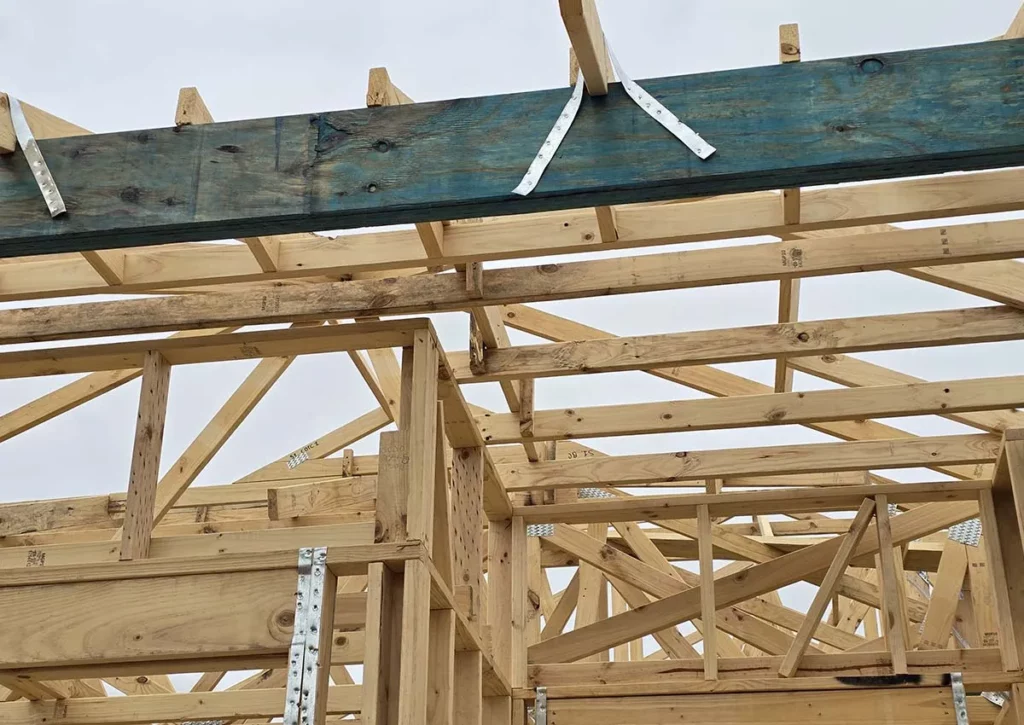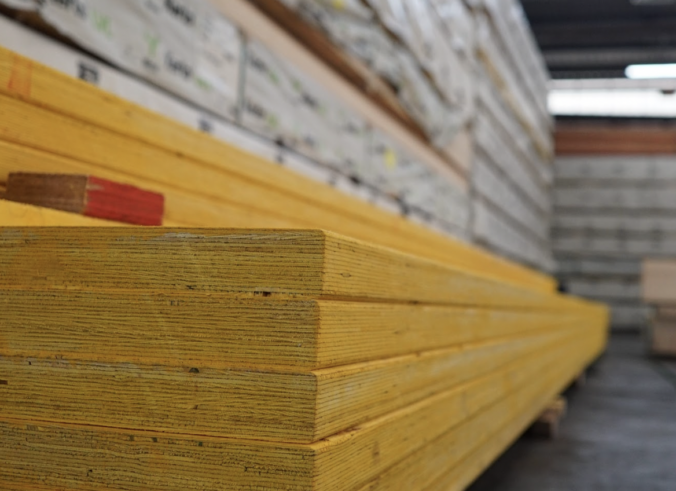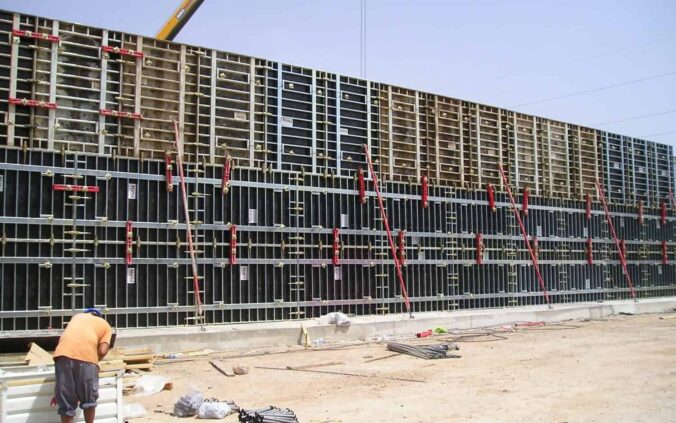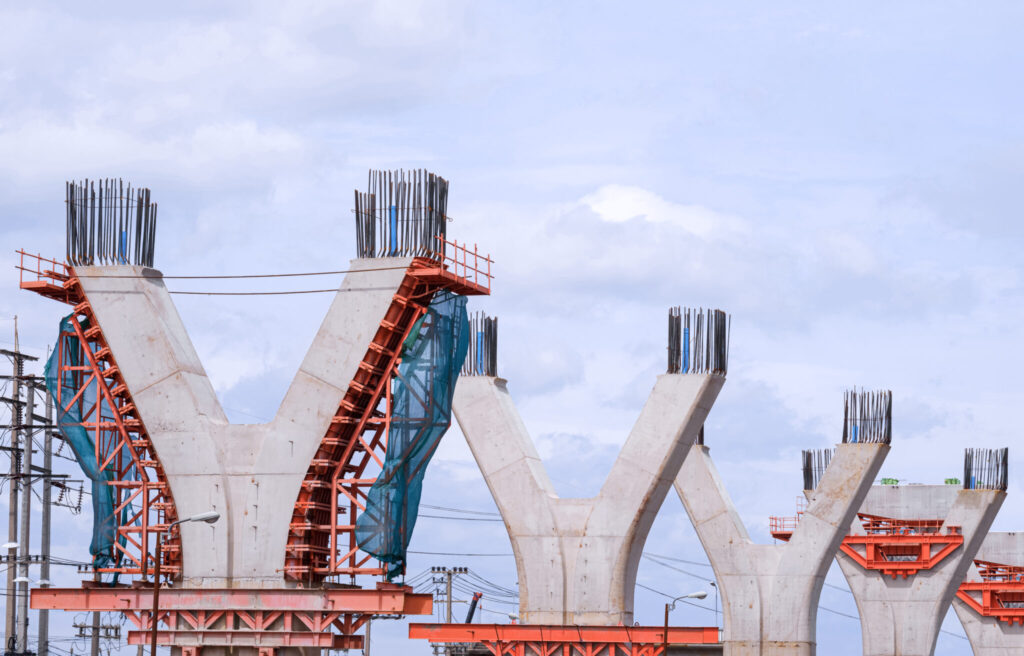In the construction industry, the choice of materials can significantly impact the quality, efficiency, and sustainability of a project. One material that has gained considerable attention in recent years is Laminated Veneer Lumber (LVL). This engineered wood product is increasingly being favoured over traditional timber options for formwork applications. Understanding the advantages of LVL formwork can help builders and contractors make informed decisions that enhance project outcomes.
Understanding LVL Formwork
Laminated Veneer Lumber (LVL) is an engineered wood product made from thin layers of wood veneer that are glued together. This process results in a material that is not only strong but also highly versatile. LVL formwork is particularly well-suited for formwork, which is the temporary structure used to support concrete until it hardens. The unique properties of LVL make it an attractive alternative to traditional timber options.

Composition and Manufacturing Process
The manufacturing process of LVL involves several steps, including the selection of high-quality veneers, adhesive application, and pressing. This controlled production method ensures that LVL has uniform strength and performance characteristics. Unlike traditional timber, which can vary significantly in quality and strength due to knots and growth rings, LVL provides a consistent product that builders can rely on. The veneers used in LVL are typically sourced from sustainably managed forests, which not only supports responsible forestry practices but also contributes to the overall environmental benefits of using engineered wood products.
Key Properties of LVL
One of the standout features of LVL is its exceptional strength-to-weight ratio. This means that LVL can bear heavy loads while remaining relatively lightweight, making it easier to handle and install. Additionally, LVL is less prone to warping, twisting, or splitting compared to traditional timber, which can lead to significant savings in time and costs during construction. Furthermore, LVL’s resistance to moisture and its ability to maintain structural integrity under varying environmental conditions make it an ideal choice for both indoor and outdoor applications. This resilience is particularly beneficial in regions with fluctuating weather patterns, where traditional timber might succumb to the elements.
Another noteworthy aspect of LVL is its adaptability in design and application. Builders and architects appreciate the flexibility that LVL offers, allowing for innovative designs that may not be feasible with conventional materials. The ability to create custom sizes and shapes means that LVL can be tailored to meet specific project requirements, enhancing both functionality and aesthetic appeal. Additionally, the use of LVL in formwork can lead to smoother concrete finishes, as the material’s stable nature helps to maintain the precise dimensions of the moulds during the curing process, ultimately resulting in higher quality construction outcomes.
Advantages of LVL Formwork
LVL formwork offers numerous advantages over traditional timber options, making it a preferred choice for many construction projects. From enhanced durability to improved sustainability, the benefits are compelling. Learn more about sustainability on https://unity.edu/articles/what-is-sustainability/
Durability and Longevity
One of the primary advantages of LVL formwork is its durability. Unlike traditional timber, which can be susceptible to moisture damage, insect infestations, and decay, LVL is designed to withstand harsh conditions. The adhesive used in the manufacturing process creates a barrier that protects the wood from environmental factors. This durability translates to a longer lifespan for formwork, reducing the need for frequent replacements. Moreover, LVL’s resistance to warping and splitting ensures that the formwork maintains its shape and structural integrity throughout the construction process, which is vital for achieving precise and accurate results.

Cost-Effectiveness
While the initial cost of LVL may be higher than that of traditional timber, the long-term savings can be significant. The durability of LVL means that it requires less maintenance and replacement over time. Additionally, its lightweight nature can lead to lower transportation and handling costs, as fewer workers may be needed to install it. When considering the overall lifecycle costs, LVL often proves to be the more economical choice. Furthermore, the efficiency of LVL formwork can lead to faster project completion times, as it can be reused multiple times without compromising quality, ultimately contributing to reduced labour costs and increased productivity on site.
Read about formwork plywood on: Step-by-Step Plywood Formwork Techniques for Perfect Concrete Finishes
Improved Safety
Safety is a paramount concern in construction. LVL’s consistent quality reduces the risk of unexpected failures that can occur with traditional timber. The uniformity of LVL means that builders can trust its performance, leading to safer working conditions. Furthermore, its lightweight nature makes it easier to handle, reducing the likelihood of accidents during installation. Additionally, the smooth surface of LVL formwork minimises the risk of splinters and other injuries, creating a safer environment for workers. The predictable behaviour of LVL under load also allows for better planning and risk assessment, ensuring that safety protocols can be effectively implemented throughout the project.
Sustainability Considerations
As the construction industry moves towards more sustainable practices, the environmental impact of materials is under increasing scrutiny. LVL formwork offers several sustainability benefits that make it an appealing choice for eco-conscious builders. To read more about environmental click here.
Responsible Sourcing
Many manufacturers of LVL source their wood from sustainably managed forests. This responsible sourcing helps to ensure that the production of LVL does not contribute to deforestation or habitat destruction. By choosing LVL, builders can support sustainable forestry practices and contribute to the preservation of natural resources. Furthermore, the certification of these forests often adheres to rigorous standards set by organisations such as the Forest Stewardship Council (FSC), which ensures that the wood is harvested in a manner that is environmentally responsible, socially beneficial, and economically viable. This not only promotes biodiversity but also supports local communities that rely on these forests for their livelihoods.
Reduced Waste
The manufacturing process of LVL is designed to maximise the use of raw materials, resulting in less waste compared to traditional timber production. Additionally, LVL can be reused multiple times before it needs to be replaced, further reducing waste in construction projects. This aligns with the growing emphasis on minimising environmental impact within the industry. Moreover, the durability and strength of LVL mean that structures built with this material often require less frequent repairs or replacements, which can lead to a significant reduction in resource consumption over the lifespan of a building. The ability to recycle LVL at the end of its life cycle also adds to its sustainability credentials, allowing for the material to be repurposed into new products rather than ending up in landfills.
Applications of LVL Formwork
LVL formwork is versatile and can be used in a variety of applications, making it suitable for different types of construction projects. Its adaptability is one of the reasons it has become so popular among builders.
Residential Construction
In residential construction, LVL formwork is often used for foundations, walls, and floors. Its strength allows it to support heavy loads, making it ideal for multi-storey buildings. Additionally, the ease of installation means that projects can progress more quickly, reducing overall construction time. Furthermore, the precision of LVL manufacturing ensures that the components fit together seamlessly, minimising the risk of errors during assembly. This precision also contributes to the overall aesthetic appeal of the finished structure, as the formwork can be designed to create smooth, clean lines that enhance the visual impact of the home.
Commercial and Industrial Projects
For commercial and industrial projects, LVL formwork is equally effective. Its ability to withstand heavy loads and harsh conditions makes it suitable for large-scale developments such as warehouses and factories. The durability of LVL also means that it can be used in environments where traditional timber might fail, ensuring the integrity of the structure. In addition, LVL formwork can be easily customised to meet the specific requirements of a project, whether it involves complex shapes or unique load-bearing needs. This flexibility not only streamlines the construction process but also allows architects and engineers to explore innovative designs that push the boundaries of conventional construction methods. As a result, LVL formwork is increasingly being recognised as a key material in the development of sustainable and efficient building practices, contributing to the overall longevity and performance of commercial structures.
Challenges and Considerations
While LVL formwork offers numerous advantages, it is essential to consider some challenges that may arise when using this material. Understanding these factors can help builders make informed decisions.
Initial Cost and Availability
One of the main challenges associated with LVL is its initial cost. Although it can be more cost-effective in the long run, the upfront investment may deter some builders, particularly for smaller projects. Additionally, availability can vary depending on the region, and builders may need to plan ahead to ensure they can source the necessary materials. In some cases, fluctuations in the market can lead to unexpected price increases, which may further complicate budgeting for projects. Therefore, it is advisable for builders to establish relationships with reliable suppliers and consider bulk purchasing options to mitigate these risks.
Technical Knowledge and Training
Using LVL formwork may require specific technical knowledge and training for construction teams. Builders must understand the unique properties of LVL and how to work with it effectively. Investing in training can help mitigate this challenge and ensure that teams are well-equipped to handle LVL formwork safely and efficiently. Furthermore, the complexity of LVL’s structural behaviour under various loads necessitates a thorough understanding of engineering principles. Builders may also need to stay updated on the latest advancements in LVL technology and best practices, as ongoing developments in the industry can influence how this material is used in construction projects. This continuous learning approach not only enhances safety but also promotes innovation within the team, allowing for more efficient and effective construction methods.
Conclusion
In conclusion, LVL formwork presents a compelling alternative to traditional timber options in the construction industry. Its durability, cost-effectiveness, and sustainability make it an attractive choice for a wide range of applications. While challenges such as initial costs and the need for technical training exist, the benefits of LVL far outweigh these considerations. As the construction industry continues to evolve, embracing innovative materials like LVL will be crucial for achieving quality, efficiency, and sustainability in building projects.
Ultimately, the choice between LVL and traditional timber should be guided by the specific requirements of each project. By weighing the advantages and challenges of LVL formwork, builders can make informed decisions that enhance the overall success of their construction endeavours.



